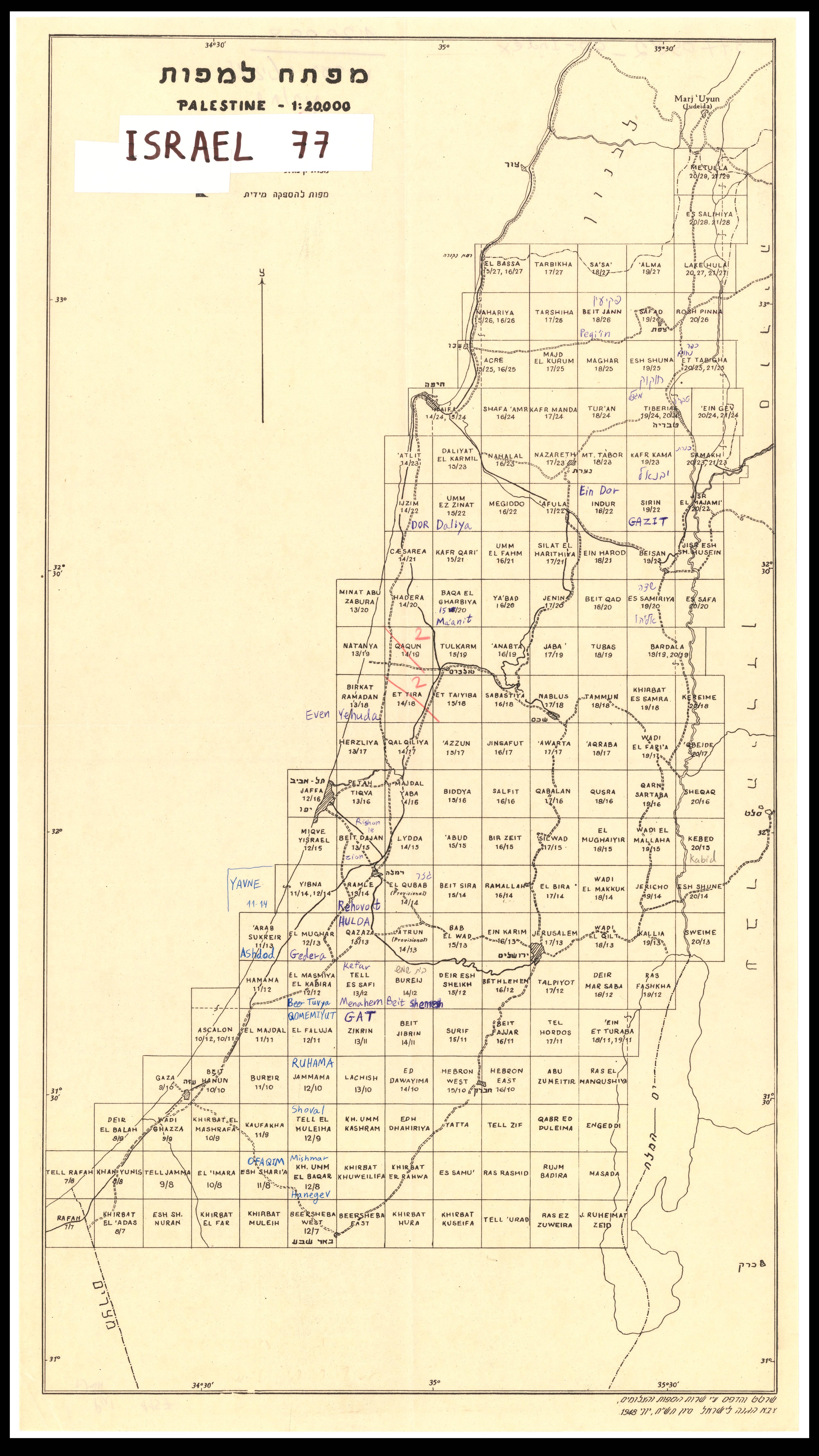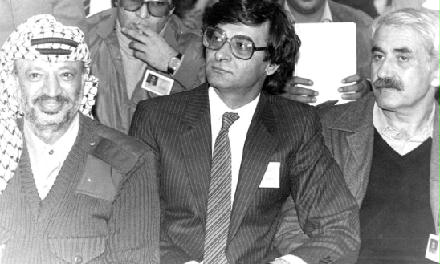|
Nakba Of Palestine
Clickable map of Mandatory Palestine with the depopulated locations during the 1947–1949 Palestine war. The Nakba ( ar, النكبة, translit=an-Nakbah, lit=the "disaster", "catastrophe", or "cataclysm"), also known as the Palestinian Catastrophe, was the destruction of Palestinian society and homeland in 1948, and the permanent displacement of a majority of the Palestinian Arabs. The term is used to describe both the events of 1948 and the ongoing persecution, displacement, and occupation of the Palestinians, both in the occupied West Bank and the Gaza Strip, as well as in Palestinian refugee camps throughout the region. The foundational events of the Nakba took place during and shortly after the 1948 Palestine war, including 78% of Mandatory Palestine being declared as Israel, the exodus of 700,000 Palestinians, the related depopulation and destruction of over 500 Palestinian villages and subsequent geographical erasure, the denial of the Palestinian right of re ... [...More Info...] [...Related Items...] OR: [Wikipedia] [Google] [Baidu] |
Hebraization Of Palestinian Place Names
Hebrew-language names were coined for the place-names of Palestine throughout different periods: under the British Mandate; after the establishment of Israel following the 1948 Palestinian exodus and 1948 Arab–Israeli War; and subsequently in the Palestinian territories occupied by Israel in 1967. A 1992 study counted 2,780 historical locations whose names were Hebraized, including 340 villages and towns, 1,000 Khirbat (ruins), 560 wadis and rivers, 380 springs, 198 mountains and hills, 50 caves, 28 castles and palaces, and 14 pools and lakes. Palestinians consider the Hebraization of place-names in Palestine part of the Palestinian Nakba. Many place names in Palestine are Arabised forms of ancient Hebrew and Canaanite place-names used during antiquity; many of the original names can be found in the Hebrew Bible and the Talmud. Most of these names have been handed down for thousands of years though their meaning was understood by only a few. During classical and late anti ... [...More Info...] [...Related Items...] OR: [Wikipedia] [Google] [Baidu] |
Statelessness
In international law, a stateless person is someone who is "not considered as a national by any state under the operation of its law". Some stateless people are also refugees. However, not all refugees are stateless, and many people who are stateless have never crossed an international border. On November 12, 2018, the United Nations High Commissioner for Refugees stated there are about 12 million stateless people in the world. Causes Conflict of law Conflicting nationality laws are one of the causes of statelessness. Nationality is usually acquired through one of two modes, although many nations recognize both modes today: * ''Jus soli'' ("right of the soil") denotes a regime by which nationality is acquired through birth on the territory of the state. This is common in the Americas. * ''Jus sanguinis'' ("right of blood") is a regime by which nationality is acquired through descent, usually from a parent who is a national. Almost all states in Europe, Asia, Africa, and Oce ... [...More Info...] [...Related Items...] OR: [Wikipedia] [Google] [Baidu] |
Dispossess
Eviction is the removal of a tenant from rental property by the landlord. In some jurisdictions it may also involve the removal of persons from premises that were foreclosed by a mortgagee (often, the prior owners who defaulted on a mortgage). Depending on the laws of the jurisdiction, eviction may also be known as unlawful detainer, summary possession, summary dispossess, summary process, forcible detainer, ejectment, and repossession, among other terms. Nevertheless, the term ''eviction'' is the most commonly used in communications between the landlord and tenant. Depending on the jurisdiction involved, before a tenant can be evicted, a landlord must win an eviction lawsuit or prevail in another step in the legal process. It should be borne in mind that ''eviction'', as with '' ejectment'' and certain other related terms, has precise meanings only in certain historical contexts (e.g., under the English common law of past centuries), or with respect to specific juris ... [...More Info...] [...Related Items...] OR: [Wikipedia] [Google] [Baidu] |
Forced Displacement
Forced displacement (also forced migration) is an involuntary or coerced movement of a person or people away from their home or home region. The United Nations High Commissioner for Refugees, UNHCR defines 'forced displacement' as follows: displaced "as a result of persecution, conflict, generalized violence or human rights violations". A forcibly displaced person may also be referred to as a "forced migrant", a "displaced person" (DP), or, if displaced within the home country, an "internally displaced person" (IDP). While some displaced persons may be considered as refugees, the latter term specifically refers to such displaced persons who are receiving legally-defined protection and are recognized as such by their country of residence and/or international organizations. Forced displacement has gained attention in international discussions and policy making since the European migrant crisis. This has since resulted in a greater consideration of the impacts of forced migratio ... [...More Info...] [...Related Items...] OR: [Wikipedia] [Google] [Baidu] |
Mahmoud Darwish
Mahmoud Darwish ( ar, محمود درويش, Maḥmūd Darwīsh, 13 March 1941 – 9 August 2008) was a Palestinian poet and author who was regarded as the Palestinian national poet. He won numerous awards for his works. Darwish used Palestine as a metaphor for the loss of Eden, birth and resurrection, and the anguish of dispossession and exile.Maya Jaggi"Profile: Mahmoud Darwish – Poet of the Arab world" ''The Guardian'', 8 June 2002. He has been described as incarnating and reflecting "the tradition of the political poet in Islam, the man of action whose action is poetry.""Prince of Poets" ''The American Scholar''. He also served as an editor for several literary magazines in Palestine. Biography Mahmoud Darwish was born in 1941 in |
Palestinian Key
The Palestinian key is the Palestinian symbol of their homes lost in the Nakba, when more than half of the population of Mandatory Palestine was either expelled or fled violence in the 1948 Palestinian exodus and subsequently refused the right to return. Almost 75 years later the key remains a potent symbol and reminder of physical and emotional loss and injustice. It is considered part of a hope for return and a claim to the lost properties.Feldman, llana. 2008Refusing Invisibility: Documentation and Memorialization in Palestinian Refugee Claims Journal of Refugee Studies 21 (4): 4, page 503: "Anyone familiar with Palestinian visibility practices will certainly be aware of the importance of certain central objects within this field. Many refugees still have the keys to their houses in Palestine. Keeping these keys, and showing them to visitors and researchers, is part of a hope for return and a claim to these properties. Given this widespread practice, these keys, with their dist ... [...More Info...] [...Related Items...] OR: [Wikipedia] [Google] [Baidu] |
Palestinian Keffiyeh
The Palestinian ''keffiyeh'' ( ar, كوفية, koofiyyeh) is a chequered black and white scarf that is usually worn around the neck or head. This ''keffiyeh'' has become a symbol of Palestinian nationalism, dating back to the 1936–1939 Arab revolt in Palestine. Outside of the Middle East and North Africa, the ''keffiyeh'' first gained popularity among activists supporting the Palestinians in the conflict with Israel and is an icon of Palestinian solidarity. History Traditionally worn by Palestinian farmers, during the Ottoman period the ''keffiyeh'' signalled that the wearer was rural, in contrast to the tarboosh worn by the urban classes. The black and white ''keffiyeh'' worn by Palestinian men of any rank, became a symbol of Palestinian nationalism during the Arab Revolt of the 1930s. This reached a peak in 1938, when the leadership of the revolt ordered that the urban classes replace their traditional tarbush hats with the keffiyeh. The move was intended to create uni ... [...More Info...] [...Related Items...] OR: [Wikipedia] [Google] [Baidu] |
Handala
Handala ( ar, حنظلة, Ḥanẓala), also Handhala, Hanzala or Hanthala, is a prominent national symbol and personification of the Palestinian people. The character was created in 1969 by political cartoonist Naji al-Ali, and first took its current form in 1973. Handala became the signature of Naji al-Ali's cartoons and remains an iconic symbol of Palestinian identity and defiance. The character has been described as "portraying war, resistance, and the Palestinian identity with astounding clarity". The name comes from ''Citrullus colocynthis'' ( ar, حنظل, Ḥanẓal), a perennial plant local to the region of Palestine which bears a bitter fruit, grows back when cut and has deep roots. Handala's impact has continued in the decades after al-Ali's 1987 assassination; today the character remains widely popular as a representative of the Palestinian people, and is found on numerous walls and buildings throughout the West Bank (notably as West Bank Wall graffiti a ... [...More Info...] [...Related Items...] OR: [Wikipedia] [Google] [Baidu] |
Palestinian Nationalism
Palestinian nationalism is the national movement of the Palestinian people that espouses self-determination and sovereignty over the region of Palestine.de Waart, 1994p. 223 Referencing Article 9 of ''The Palestinian National Charter of 1968''. The Avalon Project has a copy her/ref> Originally formed Anti-Zionism, in opposition to Zionism, Palestinian nationalism later internationalized and attached itself to other ideologies; it has thus rejected the occupation of the Palestinian territories by the government of Israel since the 1967 Six-Day War, and the preceding non-domestic Arab occupations over the Gaza Strip ( by Egypt) and the West Bank ( by Jordan) additionally had opposition. Palestinian nationalists often drawn upon broader political traditions in their ideology, examples being Arab socialism and ethnic nationalism in the context of Muslim religious nationalism. Related beliefs have shaped the government of Palestine and continue to do so. In the broader context ... [...More Info...] [...Related Items...] OR: [Wikipedia] [Google] [Baidu] |
Palestinian Culture
The Culture of Palestine is the culture of the Palestinian people, who are located in the Palestine , and across the region historically known as Palestine, as well as in the Palestinian diaspora. Palestinian culture is influenced by the many diverse cultures and religions which have existed in historical Palestine. The cultural and linguistic heritage of the Palestinian people is a blend of both indigenous Canaanite, and the Phoenician elements and the foreign cultures that have come to rule the land and its people over the course of thousands of years. Cultural contributions to the fields of art, literature, music, costume and cuisine express the Palestinian identity despite the geographical separation between the Palestinians from the Palestinian territories, Palestinian citizens of Israel and Palestinians in the diaspora. Palestinian culture consists of food, dance, legends, oral history, proverbs, jokes, popular beliefs, customs, and comprising the traditions (including oral ... [...More Info...] [...Related Items...] OR: [Wikipedia] [Google] [Baidu] |
Nakba Day
Nakba Day ( ar, ذكرى النكبة, translit=Dhikra an-Nakba, lit=Memory of the Catastrophe) is the day of commemoration for the ''Nakba'', also known as the Palestinian Catastrophe, which comprised the destruction of Palestinian society and homeland in 1948, and the permanent displacement of a majority of the Palestinian people. It is generally commemorated on 15 May, the Gregorian calendar date of the Israeli Declaration of Independence in 1948. For Palestinians, it is an annual day of commemoration of the displacement that preceded and followed Israel's establishment. The day was officially inaugurated by Yasser Arafat in 1998, though the date had been unofficially used for protests since as early as 1949. Timing Nakba Day is generally commemorated on 15 May, the day after the Gregorian calendar date for Israel's Independence. In Israel, Nakba Day events have been held by some Arab citizens on Yom Ha'atzmaut (Israel's Independence Day), which is celebrated in Israel o ... [...More Info...] [...Related Items...] OR: [Wikipedia] [Google] [Baidu] |


.jpg)




_(cropped).jpg)


